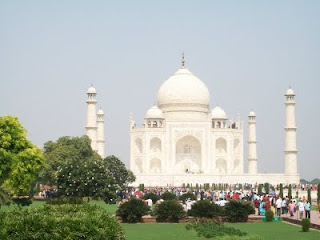
Commonwealth Games Map
This blog is a comprehensive and in-depth guide to the events, people and places throughout the history of India
 Situated on the west bank of the Bhagirathi river, Ambika Kalna, known as Kalna in common parlance, was once a prosperous port town in the state of West Bengal.
Situated on the west bank of the Bhagirathi river, Ambika Kalna, known as Kalna in common parlance, was once a prosperous port town in the state of West Bengal.
 Brazilian-born actress Daniela Lavender is all set to play Kandahari Begum, the first wife of 6th Mughal Emperor Shah Jahan, builder of Taj Mahal in Ben Kingsley’s much awaited venture Taj, a historical saga based on the events leading up to the building of the Taj Mahal. In January this year she was in Agra with Ben Kingsley who also happens to be her husband.
Brazilian-born actress Daniela Lavender is all set to play Kandahari Begum, the first wife of 6th Mughal Emperor Shah Jahan, builder of Taj Mahal in Ben Kingsley’s much awaited venture Taj, a historical saga based on the events leading up to the building of the Taj Mahal. In January this year she was in Agra with Ben Kingsley who also happens to be her husband. Following the Mahabharata War when the Pandavas were safely settled in Kuru land, Krishna returned to Dwarka where he ruled the Yadavas for 36 years. There was a constant bickering among the Yadava chiefs who were hell bent to exterminate each other. This led Krishna to ban strong drink in the kingdom. However during a festival when the ban was relaxed, fight broke out between the Yadavas and engulfed the whole city. Despite all his divinity Krishna was not able to bring order to the kingdom. The whole Yadava clan was mostly destroyed. His son Pradyumma was killed before his eyes and his elder brother also died.
Following the Mahabharata War when the Pandavas were safely settled in Kuru land, Krishna returned to Dwarka where he ruled the Yadavas for 36 years. There was a constant bickering among the Yadava chiefs who were hell bent to exterminate each other. This led Krishna to ban strong drink in the kingdom. However during a festival when the ban was relaxed, fight broke out between the Yadavas and engulfed the whole city. Despite all his divinity Krishna was not able to bring order to the kingdom. The whole Yadava clan was mostly destroyed. His son Pradyumma was killed before his eyes and his elder brother also died.One of the most written-about and photographed of the monuments in the world, the Hawa Mahal ( Palace of Winds) was built in 1799 by Sawai ...
